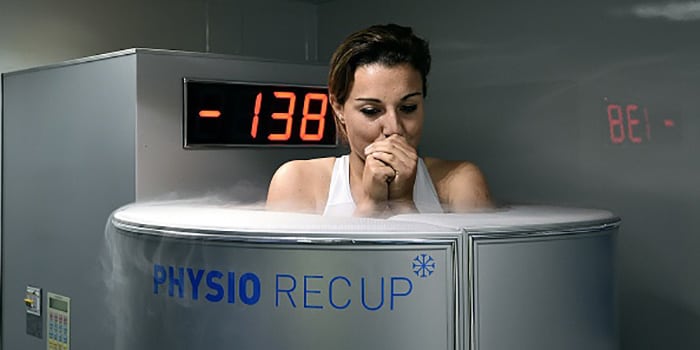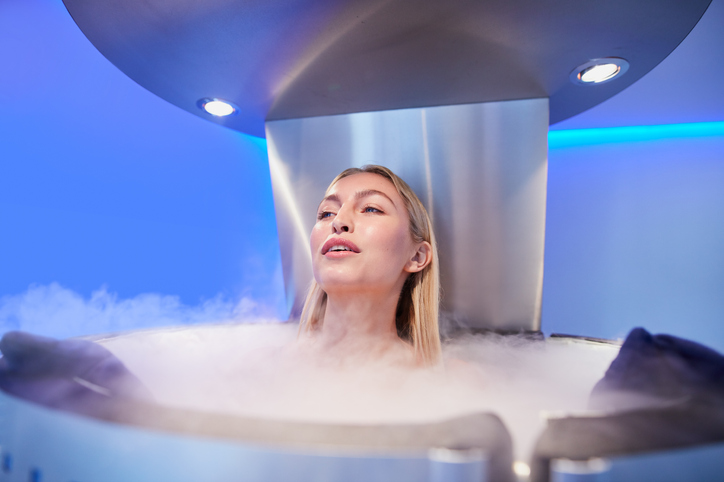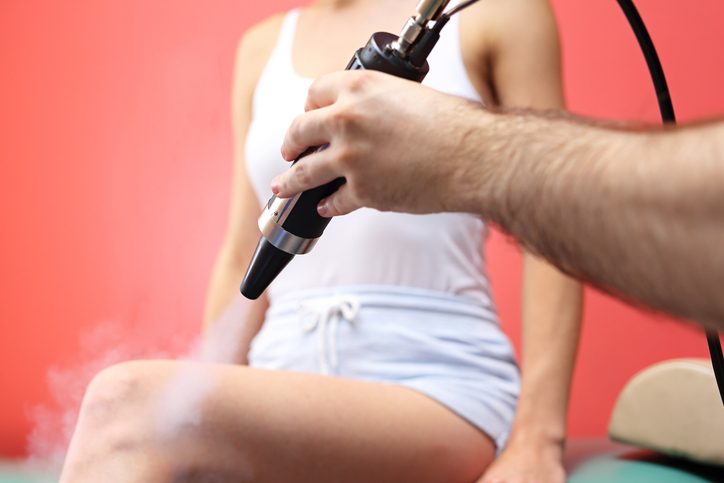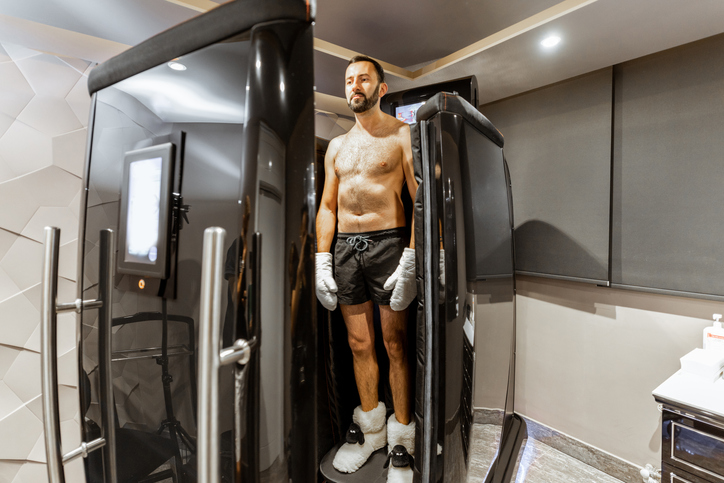Can You Freeze Your Way to Weight Loss?

Those who swear by cryotherapy claim it can zap inflammation, boost metabolism, and even help you lose weight — all while giving you a killer endorphin rush in the process.
But are these cryotherapy benefits legit? And can you really freeze your way to weight loss?
Short answer: It’s too soon to tell. There’s not much science behind using cryotherapy for weight loss — but it may have some healthy benefits. Here’s what you need to know.
What Is Cryotherapy?

Whole-body cryotherapy — or “cold therapy” — has actually been around since the late 1970s, when it was introduced as a treatment for rheumatoid arthritis.
That’s the same decade that gave us Alien, the first Star Trek feature film, and Star Wars, so it’s no surprise that cryotherapy sounds like something out of a sci-fi movie.
During a cryotherapy session, which typically lasts three minutes or less, you’ll strip down to your skivvies and step into an icy chamber cooled with liquid nitrogen (or using electric refrigeration), where temperatures plummet to nearly 200 degrees below zero.
Localized cryotherapy vs. whole-body cryotherapy

There are two types of cryotherapy: localized and whole-body.
Localized cryotherapy, which targets specific areas with extreme cold, has proven effective for destroying skin lesions (ever had a wart frozen off?).
Cryo spas claim it can also alleviate skin conditions like psoriasis, and there’s some evidence that localized cryotherapy can target and reduce adipose tissue, a.k.a. fat.
Whole-body cryotherapy involves blasting your entire body with subzero temperatures in a cryo chamber.
This is the type of cryotherapy that is commonly believed to help speed up recovery and weight loss.
What Are the Benefits of Whole-Body Cryotherapy?
So why exactly would you want to jump into a chamber that’s colder than any part of Antarctica? Here are some of the potential health benefits of cryotherapy.
1. Speeds up recovery
Studies on cryotherapy are limited, and mostly focus on its effectiveness for pain relief and post-workout recovery.
“It can be helpful in speeding recovery from rigorous physical training,” says Dr. Alan Christianson, a naturopathic medical doctor (NMD) in Phoenix who has studied cryotherapy.
2. Soothes sore muscles
Whole-body cryotherapy has gained popularity among elite athletes as a way to soothe sore muscles.
“It appears there is a large, whole-body decrease in inflammation,” says Marcus Elliot, MD, founder and director of P3, an elite training center and research lab in Santa Barbara, CA. “This can improve recovery post-training.”
3. May help with weight loss
Devotees claim cryotherapy can accelerate weight loss. The theory is that your body goes into survival mode when exposed to the brutal cold; this supercharges your metabolic rate and torches calories.
It sounds too good to be true — and it might be. “We saw an initial increase in metabolic rate, but no consistent results for lasting weight loss,” Christianson says.
And Elliott notes that the adrenaline rush may simply make you feel like you’re burning more calories: “There is definitely a big release of norepinephrine or adrenaline, and subjectively, it feels like you are utilizing more energy,” he says.
There’s also some evidence that cryotherapy may increase appetite — not exactly helpful when you’re trying to lose weight.
In a small study, a group of 12 athletes completed a high-intensity workout followed by either a 3-minute cryotherapy treatment or a rest period.
Researchers found the athletes consumed significantly more calories after cryo than they did after simply resting.
Side Effects of Cryotherapy

Experts caution that the frigid temperatures in a whole-body cryotherapy machine may aggravate conditions like high blood pressure, heart or lung disease, or conditions triggered by the cold.
But overall, if you’re intrigued by the idea of becoming a human popsicle, the procedure is relatively safe to try.
Unlike the bone-chilling effects of an ice bath, the lack of moisture in a cryo chamber keeps the cold air from penetrating your skin by more than a half-millimeter.
“When the treatment is done per guidelines, there are no substantial risks,” Christianson says.
(Following the rules is crucial, though — track star Justin Gatlin reportedly got frostbite after wearing damp socks into a cryo chamber.)
Should You Try Cryotherapy for Weight Loss?
Probably not. When it comes to long-term weight loss, there’s no concrete proof that cryotherapy works — and it’s an expensive gamble. E
ven if the calorie-burning claims ultimately prove to be true, it’s just like any weight-loss effort — without repetition, you won’t see results.
And treatments typically cost between $50 to 100 per session, making repetition difficult for those of us whose paychecks don’t come from the NBA.
But even if it’s not a magical weight-loss chamber, cryotherapy may help you recover more quickly and get back into your regular fitness regimen.
And in the long run, that might help you see faster results. So if you’re curious about cryo, you might consider trying it — but consult your doctor first.
